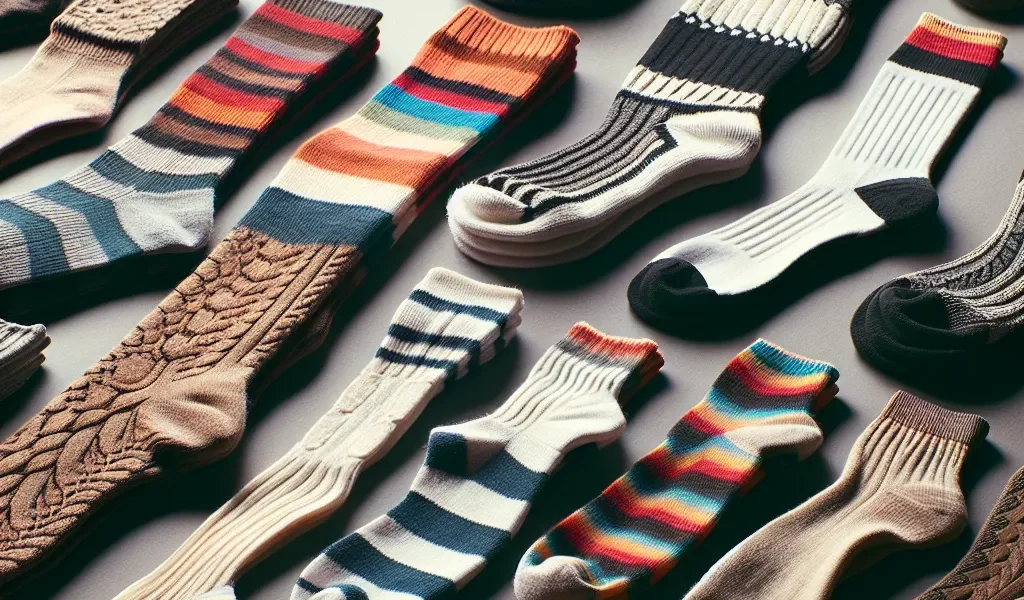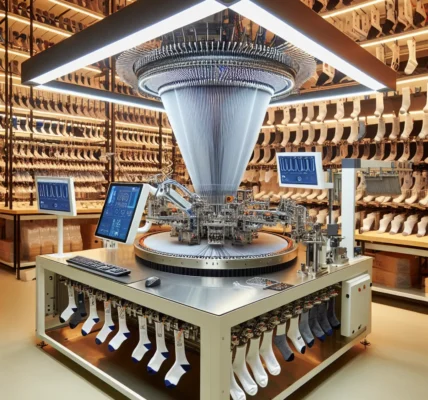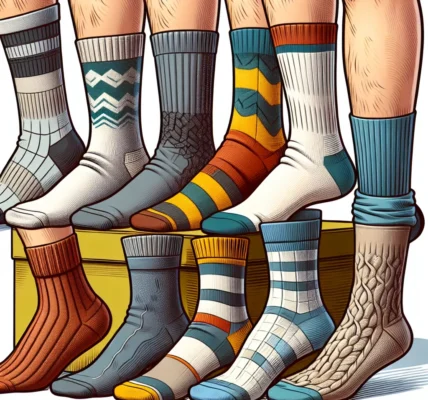The Historical Significance of Socks in Footwear Evolution
The history of socks is deeply intertwined with the evolution of footwear. From their humble beginnings as simple foot coverings to their modern role as a fashion statement, socks have played a significant role in the development of footwear. Throughout history, socks have served both functional and symbolic purposes, reflecting the cultural and technological advancements of their time.
In ancient civilizations, such as Egypt and Rome, socks were primarily made from animal skins and served as a protective layer for the feet. As footwear evolved, so did the design and materials of socks. The Middle Ages saw the emergence of knitted socks, marking a shift towards more intricate and comfortable foot coverings. This period also witnessed the use of vibrant colors and patterns, indicating the symbolic significance of socks as a fashion accessory.
The industrial revolution further revolutionized the production of socks, leading to mass manufacturing and the availability of a wide variety of styles for different purposes. Socks became not only a practical necessity but also a means of self-expression and social status. The 20th century saw the introduction of nylon and other synthetic materials, expanding the range of options for consumers and emphasizing the fashion aspect of socks.
In recent decades, socks have experienced a resurgence in the fashion world, with designers and brands pushing the boundaries of creativity and innovation. From playful patterns to luxurious materials, socks have become a focal point of self-expression and individual style. The historical significance of socks in footwear evolution is evident in their continued relevance as both a functional and fashion-forward accessory.
In conclusion, the evolution of socks from simple foot coverings to fashion statements highlights their historical significance in footwear evolution. From ancient civilizations to modern-day fashion trends, socks have remained a foundational element of human attire, reflecting the cultural, technological, and artistic developments of their time.
The Practical Functionality of Socks: Then and Now
When we think of socks, we often picture them as a fashion statement or a cozy accessory for our feet. However, the practical functionality of socks has evolved significantly over the years. Originally, socks were designed purely for warmth and protection. Early socks were made from animal skins or natural fibers such as wool, providing insulation and comfort in cold climates.
As time progressed, the practical functionality of socks expanded to include specialized designs for different activities. Athletic socks, for example, were developed with features to enhance performance, such as moisture-wicking materials and extra cushioning in high-impact areas. Similarly, medical socks were created to provide support and alleviate specific foot conditions.
In the modern era, technological advancements have further revolutionized the practicality of socks. Innovative materials like merino wool and synthetic blends offer superior moisture management and temperature regulation. Additionally, seamless toe constructions and ergonomic designs cater to the comfort and well-being of the wearer.
Today, socks continue to serve their fundamental practical purposes while also making a bold fashion statement. The evolution of socks from purely functional items to versatile, technologically advanced accessories reflects our ongoing quest for both comfort and style.
Socks as a Fashion Statement Throughout History
Socks have evolved from being just a functional item of clothing to a fashion statement with a rich history. Throughout the centuries, socks have played a prominent role in fashion, reflecting the cultural and social norms of the time. In ancient civilizations, such as in Egypt and Greece, socks were crafted from animal skins and fur to provide warmth and protection. However, it was during the Middle Ages that socks began to transcend their practical purpose and emerge as a fashion accessory.
The Renaissance period saw the introduction of knit stockings, which became a symbol of wealth and status. Elaborately designed and colorful stockings were highly sought after, and they were often used to convey social standing and sophistication. As the centuries progressed, socks continued to be an integral part of fashionable attire, with different styles and materials coming into vogue.
During the 20th century, socks underwent a revolution in terms of design and functionality. The advent of nylon and other synthetic fibers allowed for a variety of patterns, colors, and textures, giving rise to a new era of sock fashion. In recent decades, socks have experienced a resurgence in popularity, with bold and quirky designs becoming a means of self-expression and style. Today, socks are not only a practical garment but also a fashion statement, with an array of options available to suit individual tastes and preferences.
In conclusion, the evolution of socks as a fashion statement has been a fascinating journey through history. From serving purely utilitarian purposes to becoming a symbol of style and personality, socks have truly come a long way. Their role in fashion continues to evolve, and it is evident that they will remain a significant aspect of sartorial expression for years to come.
The Future of Socks: Innovations in Style and Technology
In recent years, socks have evolved from being purely functional to becoming a significant fashion statement. However, the future of socks is poised to undergo even more dramatic changes with innovations in style and technology. One of the most prominent developments in sock technology is the use of sustainable and eco-friendly materials. As environmental consciousness continues to rise, there is a growing demand for socks made from recycled materials, organic cotton, or bamboo fibers. These materials not only contribute to reducing waste but also offer enhanced comfort and performance.
Another important aspect of the future of socks is the integration of advanced features for specific purposes. For instance, we are witnessing the emergence of socks designed for athletic performance, compression socks for better blood circulation, and even smart socks embedded with sensors to track metrics such as movement, temperature, and moisture levels. These technological innovations not only cater to functional needs but also open up new possibilities for customization and personalization.
Furthermore, the future of socks intersects with the world of fashion as designers and brands continue to push the boundaries of creativity. From bold patterns and vibrant colors to unconventional shapes and lengths, socks are becoming a canvas for self-expression and individuality. The concept of mismatched or asymmetrical socks is gaining traction, challenging traditional norms and adding an element of playfulness to fashion.
As technology and fashion converge, we can anticipate the rise of on-demand, custom-fit socks tailored to individual preferences. 3D knitting techniques and advanced manufacturing processes enable the creation of bespoke socks that perfectly conform to the wearer’s foot shape and design choices. This shift towards personalization reflects a broader trend in the fashion industry towards empowering consumers to co-create their wardrobe.
In conclusion, the future of socks is characterized by a harmonious blend of sustainability, functionality, and style. As innovation continues to drive the industry forward, we can expect socks to not only complement our outfits but also embody our values and aspirations.




